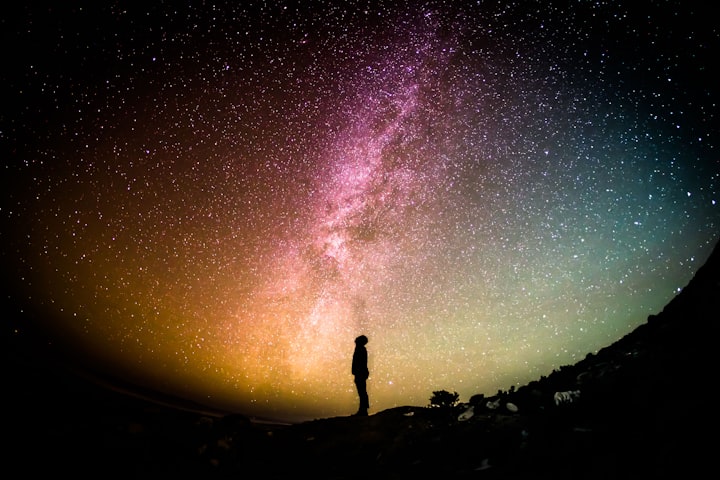
Maps in Fantasy
I have built several worlds since I began writing as a teenager, and at some point in the worldbuilding process, I tend to have a conversation about maps with my dad. He believes that fantasy authors are obsessed with maps. Not without reason. Most fantasy books come with a map of the world at the front. One I have seen but cannot now remember the title of had the wonderful idea of printing the map at the back of the book in such a way as to allow the map to be visible while reading it. To be entirely fair to my dad, this conversation usually happens when I am asking him for help in making my maps seem more realistic, a task I think he finds pointless when it comes to a fantasy world.
The fascination comes from genre expectations, and the fact that there is a quote often attributed to Tolkien - “Begin with a map.” I have no idea how accurate that quote is, but I certainly find it helpful to have a map handy when I’m writing.
The image above is the continent of Heskland. As you will shortly see, I am no great artist. I would always get these maps redone by a professional fantasy cartographer before including them in one of my books, but they are enough to demonstrate my point here.
Mountains
Once I have a coastline shape that I like, I usually begin with mountains. If you are building a world with tectonic plates, now is a good time to create a copy of your original coastline, tear it up, and then push it back together. It is the fastest way I have found to create plate boundaries for a new world, along with telling you how those plate boundaries interact with each other. I usually don’t bother with this, however. I find the locations of mountains to be less interesting than how people relate to them.
In Heskland, I have two types of mountains. The large ranges, which are created by tectonic movement, and the smaller ones, which are formed from the bones of long-dead, gigantic dragons. The tectonic ranges are newer than the dragonic ones, making them taller and more difficult to navigate through, with the southern range being volcanic.
Far more important to the new worldbuilder when it comes to mountain ranges are the physical changes even a single mountain can cause to the weather. The side of the mountains which has the prevailing winds will be wetter than the leeward side, which means that deserts tend to form on the leeward side of mountain ranges.
The other point to consider when it comes to mountains is the fact that they leave a large impression in human minds. They are, after all, big. Easily the biggest thing that most people will come into contact with. Gods dwell on their peaks, as they form a natural boundary between the Earth and Sky.
Mountains are also wilder regions than plains. They are difficult areas to travel through, and hard to farm on, even in the areas that aren’t too rocky, steep, or dry for terracing. This means they are often ignored. The wealth of mountains comes from minerals, lumber, fur, or subsistence farming of goats or hardier breeds of sheep.
Rivers descending from mountains are often too steep, narrow and fast flowing to navigate. It is difficult to build roads through mountains, and harder to keep those roads in good repair once they are built. This means that communities in mountain regions are often isolated from their lowland counterparts, meaning they hold onto and create traditions which can seem strange and outlandish to people from the more cosmopolitan areas of the lowlands.
When you are setting out country boundaries on your map, mountains form natural barriers. Usually, the boundary falls somewhere in the middle of the range, and if your story falls in a medieval-like time period, these boundaries can be very fluid in nature. Mountain ranges of this type are littered with skirmish battlefields, and any community will have fortifications simply to defend themselves from this year’s raiders - whether they come from one side of the range or the other. The only place where the boundary will not be in such a fluid location will be in a pass through the mountains. Controlling a pass gives you access to taxes, goods, and the ability to refuse entry to any who do not meet your standards.
Because of that, mountains are as much a natural location for smugglers as coastlines. If you have valuable goods to transport, sneaking past the customs officials in the main passes can be a valuable occupation indeed. Military forces can employ such smugglers, allowing forced marches to get them into places that allow for surprise attacks.
Rivers
I hate plotting rivers for fantasy worlds. It has taken me the best part of a week to plot the rivers and lakes of Heskland. I am pleased with the rivers here, however. Of all the worlds I have ever created, Heskland has the most realistic river system I have ever created.
While rivers are part of every fantasy map, they frequently don’t work as they do in reality. Of course, they don’t have to. You are writing fantasy. But if your rivers do not work as they do in reality, give me a reason for it. In reality, the river basin of a major river has a rough fan shape. Rivers go from areas of high elevation towards lower elevations, joining into larger rivers as they do, until all of the rivers in an area form into one major river which then empties into an ocean, lake or swamp.
If you have rivers which do something else - if they flow uphill, or split into two separate rivers (not just temporarily around an island, which is quite common), then give me a reason for it. Even if that reason is just ‘ancient magic, unknown today’, make certain that you know the real reason for it.
Also, if you are going to change the way that the water flows, you are also changing the way that civilisations relate to their rivers. Cities form along the banks of rivers because they are fast ways to transport goods and people, not simply because they offer a supply of water. If you have a river that flows uphill, the direction of this trade will also change, and it is very important to pay attention to that. In a normal river, heading upstream means running into rapids, shallows, and waterfalls. Sometimes it is possible to carry goods and boats around these, but they do make transporting goods more difficult.
So when you are placing your rivers, be certain that you think of the ideas you have for your cultures and how they interact.
Finally, try to avoid the mistake that I made when drawing the map of Emoria. It has a rather large ‘river’ which ran from one coast to another. I changed this, making it a narrow, gorge between two landmasses, but remember that rivers never run from coast to coast.
While we can do many things with fantasy worlds and the magic we place within them, it is best to remember that we are asking our readers to accept a great deal. Having firm rules in place that either match the real world, or are at least consistent across the world you have created will help your readers believe that what you are writing could be real, somewhere.
About the Creator
Claire Stephen-Walker
Hi. My name’s Claire, and I spend all of my time writing. I have for as long as I can remember, because it is as close to magic as reality lets me get.






Comments
There are no comments for this story
Be the first to respond and start the conversation.